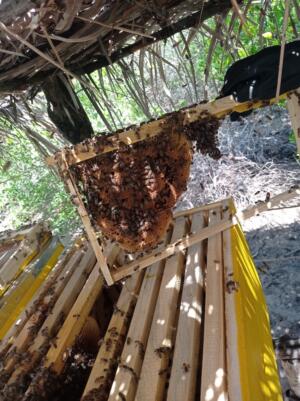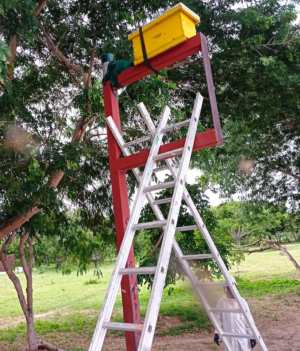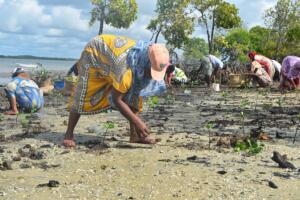Save Lamu’s Beekeeping – September Project Update
In January 2022, Save Lamu began their new project: Beekeeping to Enhance Ecosystem Restoration & Livelihoods in Lamu Archipelago’s Mangrove Communities. The aim of the project is to protect Lamu Archipelago’s mangrove forests while enhancing the livelihoods of mangrove-dependent communities by introducing beekeeping as an alternative source of income.
You can read the first project update here.
Now 7 months into the project, we want to share how the participants have been getting on.
Beginner Beekeeper Program
There are a total of 7 groups participating in this program. The groups have all received hives, basic beekeeping training, and hive management. As of the end of August, 5 groups have hives that are colonised.
The groups without colonised hives are keeping their hive areas clean and some even created homemade hanging feeders to try and attract bees.
There have been at least two colonies that have absconded the hives since the beginning of the project. The reason for the colonies leaving remain unknown. However, the groups have been encouraged by the expert to ensure their hives remain clean and free of insects to prevent any further absconding.

Grassroots Beekeeper Program
There is now only one participant in this program, Salim. They have completed their business plan, ordered more equipment, and also moved their hives to a more suitable location. Salim has 5 old hives and has ordered 3 new ones as part of the project. Of the old hives, 2 are colonised with very strong (and slightly scary) colonies.
Bee Rescue
The groups successfully rescued one colony from Anidan Children’s Home and Hospital to be taken care of by a group in Lamu Town. The bees had been colonised in a tree near the basketball court and were posing a threat to students and staff. There is, however, still one colony at Anidan that is proving hard to rescue, the groups continue to work on catching them.
In the meantime, a second rescue is underway in Hindi at the Red Cross rehabilitation centre. The groups hope that the bees will move to their catcher boxes soon to be rehomed somewhere safe where they can be looked after and start producing honey.

Mangrove Restoration
Part of the project is also focused on mangrove restoration and conservation. In July, Save Lamu with the assistance of the Kenya Forest Service (KFS), identified 2 locations where they would do mangrove planting. These sites were between Matondoni and Mokowe and between Matondoni and the Kisisi channel.
KFS advised on the species of mangroves that should be planted, the species chosen were to be a mix of Mikandaa, Mikoko and Mituu. Many of the seedlings to be planted were from the nurseries of the organisations themselves. Many of the groups have been looking after mangrove nurseries for many years, however, lack proper training and positive experiences. It was with this in mind, that many groups requested extra training for mangrove nursery care and planting.
At the end of July, 6 groups took part in the mangrove plantings. The total area covered was 2.5 acres of land where over 3,000 seedlings were planted. The areas were checked in August and seedlings had appeared to root well with new growth being seen in most seedlings.

In Conclusion
So far, Save Lamu are confident in the success of its project. While the colonisation rates are low, the groups remain motivated and positive that their hives will get colonised. It is also positive that many of the groups have requested further training in mangrove management. While there have been many training days in mangrove care, often places are limited and there is only representation from people higher up in organisations rather than those that undertake the daily work of caring for nurseries and seedlings. LEF hopes to facilitate training with the Mangrove Action Project that will train those on the frontline of mangrove protection.
